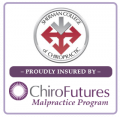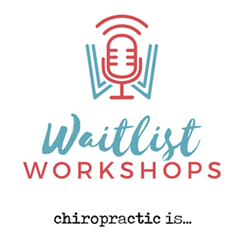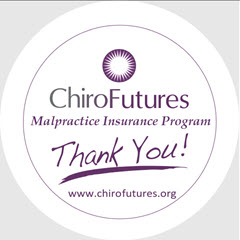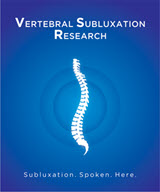Stroke, Dissection & Chiropractic

An allegation that you, as your patient’s chiropractor, caused or contributed to a dissection or stroke is unfortunately possible. These claims involve high dollar demands and can be difficult to defend. Our purpose here is to help YOU avoid this potential claim.
The issues surrounding chiropractic and vascular injuries such as dissection and stroke are complicated and nuanced. Even the seasoned chiropractor with years of education and experience caring for thousands of patients tends to get confused by all the information in the literature and popular press. What is the bottom line for the practicing chiropractor? What do you need to know and what do you need to do when it comes to the stroke issue?
Ultimately the Bottom Line is This…
There is no human, experimental evidence that chiropractic adjustments or neck manipulations are causally related to strokes. The claims and statements that have been made and that have been interpreted by plaintiff attorneys and plaintiff experts to contend a link are based largely on case controlled studies.
A multitude of systematic distortions (biases) may effect conclusions drawn from case-control studies. Other criteria must be used to determine whether an association is actually causative because an association, no matter how strong, does not prove causation. At this point in time due to the rarity with which vertebrobasilar accidents occur, experimental evidence in humans and prospective cohort studies examining the hypothesis that chiropractic adjustments cause stroke - do not exist.
A risk should be disclosed if a reasonable patient, in what the doctor knows or should know to be the patient’s position, would be likely to attach significance to the risk or cluster of risks in deciding whether to forego the proposed therapy. Patients and doctors must make this decision based upon appropriate information.
Here is What You Need to Know…
You need to be aware of the clinical issues surrounding a potential dissection or cerebrovascular accident. In our experience, claims that chiropractors caused a stroke are really a timing issue – this is known as temporality. In other words, the patient was already in the midst of a dissection or stroke or was going to have one anyway and just so happened to have seen a chiropractor during that time frame.
The good news is that this is exactly where you can reduce the risk that you will be accused of causing the event and perhaps help your patient avoid the devastating consequences of a dissection or stroke.
Here is What You Need to Do…
You probably remember being told over and over again in school and in continuing education programs that you always need to be considering cancer, infection and fracture in patients presenting to you for care – especially if those patients are in pain. Add one more critical item to that list: Vascular problems.
When you have a patient come in to see you complaining of head, face and/or neck pain (especially pain that is different or more severe than they have had before), dizziness, blurred vision etc, take an alternate approach. You need to differentiate this pain from the garden variety mechanical neck pain and/or cervicogenic headache. This patient could be presenting a potential dissection or impending stroke. How do you do that?
Stop, Look, & Listen . . .
Start by Focusing in on Their History:
Neurological:
- Does the patient have any double vision or other
visual problems? - Is there any dizziness, vertigo or lightheadedness?
- Are there more dramatic symptoms such as drop attacks,
sudden weakness or numbness of the head, face or extremities? - Is there any unilateral numbness anywhere in the body?
- Does the patient have any difficulty with speech or swallowing?
- Is there any problem with walking, balance or coordination?
- Is there any nausea, vomiting or upset stomach?
- Is there any nystagmus or involuntary rapid eye movements?
- Is there any giddiness – does the patient appear nervous or confused?
Cardiopulmonary:
- Does the patient have a history of TIA’s, stroke or any heart disease or hypertension?
- Is there a history of chronic lung disease or recent upper respiratory infection?
- Any pertinent family history?
Skin: Is there a history of easy bruising, bleeding disorders or problems with wound healing?
Musculoskeletal: Does the patient have a history of chronic joint pain in the spine or extremities? Is this pain different than the past?
Gastrointestinal/Genitourinary: Is there a history of blood in the urine or stools, or urinary tract infections?
Trauma: Have they experienced any trauma that may have injured blood vessels?
Connective Tissue Disorders: Do they have a history of any of the following: polycystic kidney disease, Type IV Ehlers-Danlos, Marfans, or fibromuscular dystrophy?
Other: Are they taking any drugs or medications - especially oral contraceptives? What is their tobacco use history? Any previous hospitalizations? Are they under 45 years old? Are they overweight?
Next Focus on Your Examination:
- Can the patient smile, frown and puff out their cheeks?
- Can they raise their arms and legs?
- Can they stand with their feet together and their eyes closed (stand close by them)?
- Can they say a tongue twister?
Can they stick out their tongue and move it around?
- Does mechanical stimulation of the neck or palpation reproduce their head or neck pain?
- Is there facet joint and neck muscle tenderness?
- If they have dizziness or vertigo does neck motion or movement aggravate it or bring it on?
Then Make a Decision Erring on the Side of Caution
If the history and examination lead you to suspect even the outside possibility of a dissection or stroke – DO NOT adjust or manipulate the patient – call 911, get them to a hospital, have them lay down and monitor the patient while you wait. Don’t give them anything to eat or drink and do not allow them to go home if they improve while laying there. Same goes if they have stroke like symptoms after a treatment.
You are better safe than sorry to order or make a referral for an MRA and an MRI to rule out dissection and stroke. If you don’t know how to do that or time is of the essence then get them to the appropriate provider or emergency room.
Summary
As a chiropractor your number one goal is to help people. Many patients come to see you with neck pain, headaches, dizziness etc. You feel confident you can help them. In some cases those complaints are secondary to vascular problems that may already be in process. Recognize this so you can make sure your patient gets the right care.
If those complaints are coupled with history and/or physical exam findings that suggest dissection or stroke: Stop, Look and Listen more intently and err on the side of caution.
If it turns out that that everything is negative – celebrate that with the patient and then set about adjusting them as needed.
As always I look forward to your feedback, comments and suggestions.
Matthew McCoy DC, MPH
matthewmccoy@comcast.net
CEO & Co-Founder
ChiroFutures Malpractice Program
http://www.chirofutures.org

Blogs
- The Chiropractic Cartel: A Look Back at Bias in Accreditation and its Imact on Today's Profession
- Inside Montana's Chiropractic Monopoly: ACA & MCA's Brazen Board Takeover
- Concerns Grow About Control of the NY State Chiropractic Board by the ACA - Use of X-ray in NY Under Threat
- Reproductive Health Information and Chiropractic Care: Navigating New Privacy Regulations
- Navigating Substance Use Disorder (SUD) Consent: What Chiropractors Need to Know













